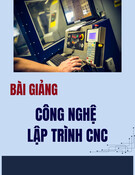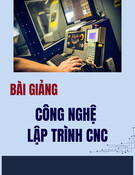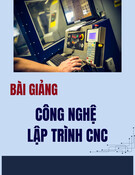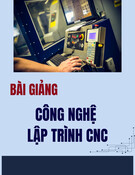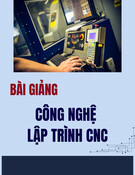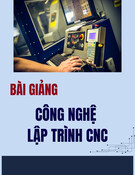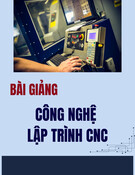
* Corresponding author.
E-mail address: brebiasz@zarz.agh.edu.pl (B. Rebiasz)
© 2020 by the authors; licensee Growing Science, Canada.
doi: 10.5267/j.dsl.2019.10.003
Decision Science Letters 9 (2020) 215–232
Contents lists available at GrowingScience
Decision Science Letters
home
p
a
g
e: www.Growin
g
Science.com/
d
sl
Selection of optimal portfolios of interdependent real options
Bogdan Rebiasza*
aAGH University of Science and Technology, Poland
C H R O N I C L E A B S T R A C T
Article history:
Received June 9, 2019
Received in revised format:
September 25, 2019
Accepted October 27, 2019
Available online
Octobe
r
27, 2019
This paper presents a new method for selection of optimal options portfolios. The problem of
defining optimal portfolios of real options is formulated as integer programming. The algorithm
of generating an optimal portfolio of real options is also presented. The incremental benefit of
portfolio of real options is valued using Monte Carlo simulation and modeling the prices and
demand as Geometric Brownian Motion. The presented method allows to select optimal
portfolios of real options with consideration of statistical and qualitative dependences of options.
The results show that real options can generate a significant increase in the net present value
(NPV).
.
by the authors; licensee Growing Science, Canada 2020©
Keywords:
Real options
Portfolio selection
Stochastic processes
Investment decision
M
onte Carlo simulation
1. Introduction
In the 1950s portfolio theory was discovered and developed by Markowitz (1952). The financial
portfolio analysis is based on the concept of diversification. Diversification is decisive for the creation
of an efficient portfolio. Thanks to it, we get the opportunity to reduce the variability of returns around
the expected return (Markowitz, 1952). Markowitz diversification is understood as a combination of
assets that are less than perfectly correlated. Thanks to diversification, we get a risk reduction while
maintaining the level of portfolio returns (Francis, 1991). Markowiz (1952) definied the efficient
portfolio as any asset or combination of assets that has the maximum expected return in its risk class
or the minimum risk at its level of expected return. Capital budgeting is the process of building an
enterprise investment program based on the analysis of investment opportunities. Such a program can
be defined as a portfolio. Usually an efficient investment projects portfolio is sought. An efficient
portfolio of investment projects is one which provides (e.g. Zuluaga et al., 2007; Dickinson, 2001;
Rebiasz et al., 2017):
• the highest NPV at a given accepted level of risk,
• the lowest risk at a given accepted NPV for the portfolio.
There are currently many works that deal with the construction of such portfolios. In the process of
creating portfolios, investment projects are treated statically, and potential options generated by these
projects are not analyzed (Rebiasz et al., 2013). Myers (1977) introduced real options as a new area of
financial research. The concept of real options was based on the idea that real assets (investment

216
projects) could be evaluated based on the methods defined for financial options. Real options theory
modifies NPV, by allowing that subsequent decisions can modify the project once it is undertaken. NPV
makes no provision for this flexibility of the project and consequently undervalues its benefits.
Contemporary literature focuses mainly on the valuation of individual options (i.e. one type of
operating option at a time). However, managerial flexibility embedded in investment projects should
be analyzed in the form of a collection of real options. The concept of portfolios of real options has
been discussed by several authors (e.g. Betge, 1995; Trigeorgis, 1993; Brosch, 2001; Brosch, 2008;
Hirsa & Neftci, 2014). Hirsa and Neftci, (2014) define the portfolio as a particular combination of
assets in question. According to Brosch (2008) portfolios of real options are combinations of multiple
risky assets and multiple real options written on these assets subject to constrains. Most common
portfolios of real options consist of switching options (Kodukula & Papudesu, 2006). A switching
option gives the flexibility of being able to switch resources, assets or technology in the future.
Portfolios of real options unlike portfolios of financial options have non-additive character (Trigeorgis,
1993). Two separate financial options, e.g. to buy stock of company A and company B are independent
from one another. Therefore, they can be treated separately while defining the portfolio of options.
This portfolio will have an additive character. Whilst, real options interact in various ways. This is the
reason why they cannot be valued independently from one another. Therefore, the value of portfolio of
real options does not equal the sum of the options it is composed of. This is an important difficulty that
arises when trying to develop formal methods of defining such portfolios. When multiple real options
on multiple underlying assets are considered, the interactions in the company’s portfolio increase. In
order to seize all possible portfolio effects, it is important to analyze multiple underlying assets with
multiple real options simultaneously. This problem has not been adequately discussed in the real
options literature, meanwhile, is crucial for researchers and pracitioners (Smith & Thompson, 2008).
By defining the optimal portfolio of real options, the decision maker in practice determinies the
company’s strategy. Namely, he defines the way the company is planning to create value in the future.
This paper presents a new method of defining optimal portfolio of real options. To define the optimal
design of the real options portfolio, we need to choose the assets and options embedded in these assets,
which ensures the highest value for the portfolio taking into account different constraints. Proposed
method takes into account multiple correlated and interdependent options defined on multiple assets.
The procedure for defining such portfolio combines stochastic simulation with mixed–integer
programming. Such a model has not yet been presented in the literature. However, you can find authors
who are trying to solve this problem using the Cox-Ross-Rubinstein (CRR) model (e.g. Trigeorgis and
Kasanen, 1991; Trigeorgis, 1993; Childs et al., 1998; Brosch, 2008). This problem is discussed in
more detail in Section 3.
2. Classification of the interdependencies of real options
Real options may be interdependent for a range of reasons (Trigeorgis, 1993; Brosch, 2001). The
assessment of a particular investment opportunity in a risky world has to take into account the stochastic
correlation of this opportunity with all other opportunities. We speak of a statistical relationships of
real options when a correlation exists between the benefits generated by these options (Dickinson et
al., 2001; Santhanam & Kyparisis, 1996; Zuluaga et al., 2007). This correlation is due to the correlation
of the parameters used to calculate efficiency. For example, there is a correlation of the prices of an
enterprise’s products and raw material prices. In addition the volume of the markets for different
product ranges are correlated (Rebiasz, 2013). As a result, cash flows generated by these real options
are correlated. This type of interdependence can be partially eliminated through diversification. Beside
these stochastic interdependencies, real options can influence each other on a technical or physical
level. In order to clearly distinguish them from the stochastic relationships, they are defined as
qualitative interactions (Hax, 1985; Betge, 1995; Trigeorgis & Kasanen, 1991; Trigeorgis, 1993;
Brosch, 2001). According to Brosch (2008) and Trigeorgis (1993) portfolio interactions on the real
options level and on the real asset level can be distinguished (see Fig. 1).

B. Rebiasz / Decision Science Letters 9 (2020)
217
Portfolio interactions
Real options level Real assets level
intra-project
compoundness:
interdependencies
of severel real
options written on
the same
underlying asset
inter-project
compoundness:
connected to
interdependencies
of severel real
options and
several
underlying assets
direct qualitative
interactions: they
are inseparable
connected to
underlying real
assets, physical
properties or
indirect qualitative
interactions: have
their origin outside
the strict asset level
and due to
constraints (mostly
budget constraints)
Fig. 1. Portfolio interactions (Trigeorgis,1993; Brosch, 2008)
Interactions of real options written on the same underlying asset are defined as intra–project
compoundness (Trigeorgis, 1996). Real options on the same underlying asset interact in an intrinsic
way, therefore they cannot be valued independently from one another, but must necessarily be modeled
as a compound option (Betge, 1995; Brosch, 2001; Trigeorgis & Kasanen, 1991). These interactions
can occur in various forms. They can be partial if there are positive or negative synergies in options.
Interactions can also take the form of binary dependencies if the options are mutual exclusive or depend
on one another (Brosch, 2008). On the one hand options can be strictly substitutive. This is the case
when options exclude each other, e.g. when they are designed for servicing the same markets. On the
other hand options can be strictly complementary. This is the case when options may require that other
options exist at the same time, e.g. the construction of a department producing a specific product
requires the construction of departments preparing semi-finished products. These two relationships
can also be gradual in the sense that the cash-flow of one option can be positively or negatively affected
by the existence of other options to a different extent. Furthermore, the interactions can always be
mutual or one-way. Valuation of these interacting real options schould be realized by the valuation of
all the real options and underlying asset as a whole (Brosch, 2008; Trigeorgis, 1993). The reason for
that is the fact that options on the same real assets are linked through this asset. By exercising any
option the underlying asset is affected and with it, all other options tied to it (Trigeorgis, 1993). As an
example, one can indicate here the option to abandon. After exercising it, all other options become
outdated. What's more, the order in which the options are exercised influences the value of the
portfolio. Therefore, when the number of options within a portfolio exceeds two an order of option
execution is important and should be optimized (Smith & Thompson, 2008).
Following the same logic, an analogous effect is identified for several, interdependent underlying assets
which are denoted as inter–project compoundness (Trigeorgis, 1996). Both inter–project and intra–
project compoundness must be considered in the context of portfolios of real options. Brosch (2001)
divides interactions on the real asset level into direct and indirect ones. Direct qualitative interactions
result from the investment plan. They can also result from interactions with completed investments that
continue to generate cash flows. These interactions arise from the physical properties of investment
projects. The nature of these interactions is similar to the nature of interaction on the option level.
Indirect qualitative interactions are associated with constraints that go beyond the investment plan. In
addition, they are not directly related to the considered investment opportunities. This kind of
interaction results from general conditions and restrictions that do not necessarily are connected with
the investment projects. These constraints result from the specificity of the company. They are
qualitative because they do not result from stochastic relationships and cannot be avoided by
diversification (Betge, 1995; Brosch, 2008). Indirect qualitative interactions usually result from capital
rationing. Therefore, they could be avoided, e.g. by finding new financing resources (Brosch, 2008;
Wasilewska, 2013; Trigeorgis, 1993).

218
3. Real Options Analysis in a Portfolio Context
Meier et al. (2001) discuss a portfolio of real options subject to a capital expenditure constraint. They
propose two approaches for defining portfolios of real options. The first approach is based on the
assumption that the value of the portfolio is calculated as the sum of the values of the options in the
portfolio. The authors define the problem of finding the portfolio of options that has maximal value
and fulfils the capital expenditure constraint. This problem is formulataed as traditional knospak
problem. The model is static and the interactions of real options are not considered. This approach is
similar to traditional capital budgeting presented in many works (e.g. Dickinson et al., 2001; Chien,
2004, Rebiasz, 2013). However, in this model, the NPV was replaced by the option value. In the second
approach, the authors define an alternative optimisation model. This model uses scenarios to depict a
set of possible future states. The optimal soltion define a number of state-dependent optimal portfolios
that determines a dynamic investment strategy. The authors use here integer programming. In addition,
Meier et al. (2001) discus an efficient algorithms specific to the defined problems. Also in this model,
interactions of real option are not considered. The problem of the optimal portfolio of real options is
also discussed in the works (Brosch, 2001; Brosch, 2008). They show how far a stand-alone analysis
differs from a portfolio-analysis in the context of real options. Brosh places special emphasis to
modeling interactions of options. Furthemore he analyse path-dependencies and define dynamic budget
constraints. In his concepts, he uses CRR models and binary programming.When constructing a
portfolio of real options, problems involving inter–project interactions are particularly relevant. In this
context, Childs et al. (1998) discuss the effect of project interactions on investment decisions and
project values in a real options framework. They consider a two mutually exclusive projects. The firm
may invest in the development stage of this projects and then may select only a single project to
implement. The authors argue that sequential development is better than parallel development when
projects are statisticly dependent, and when they are highly capital-intensive, are short term in nature,
and have relatively low volatility. They also investigate the optimal ordering for sequential projects.
Finally, the authors show that the optimal ordering of such projects does not always begin with the
most profitable project. Similarly, Childs and Triantis (1999) consider the parallel development of two
R&D projects taking into consideration interaction between project cash flows. They analyse the
projects in the presence of a budget constraint that prevents the firm from developing projects in
parallel. The authors point out, inter alia, that if one project significantly dominates another early in the
development stage, the option to accelerate the lead project is likely to be more valuable than the option
to exchange projects. Gustafsson and Salo (2005) define methods for selecting R&D projects portfolio.
They developed contingent portfolio programming, which extends earlier approaches becouse provides
guidance for the selection of an optimal projects portfolio that is compatible with the decision maker’s
risk attitude. This model was used to solve the R&D projects portfolio problem. However, it could be
used to a variety of investment problems where the dynamics and interdependencies of investment
projects must be taken into consideration. Denardo and Rothblum (2004) define the problem of finding
an investment strategy (in the R&D area) that maximizes expected utility, either with a linear or an
exponential utility function. The authors emphasis on finding an effective algorithm to solve the
problem. They propose a stochastic search algorithm with a sequential compound decision process. A
review of R&D specific investment problems is found in Chien (2004), Kavadias and Loch (2004) and
Gustafsson and Salo (2005).
Vassolo et al. (2004) identify two sources of potential interactions among real options. First, they
investigate the effects of correlations between the outcomes in different options. Second, they analyze
the effects of investments that are fungible across project options. The authors show that under different
conditions multiple options can be sub−additive (due to redundancies in outcomes) or super−additive
(due to fungible inputs). Rose (1998) and Bowe and Lee (2004) consider the intra–project interactions
of options on infrastructure projects, following the framework presented in Trigeorgis (1993). Kester
(1993) analyzed inter–project dependence in the context of growth options. Kogut and Kulatilaka

B. Rebiasz / Decision Science Letters 9 (2020)
219
(1994), Kulatilaka (1995) and Huchzermeier and Cohen (1996) develop a stochastic dynamic
programming formulation for the valuation of global manufacturing strategy options for multinational
corporation. They consider a global manufacturing network under exchange rate risk, with switching
options between different manufacturing strategies contingent on exchange rate realizations. Triantis
and Hodder (1990) develop a method for valuing flexible production system using contingent claims
pricing. They ilustrate their approach by analysing a flexible production system that can switch the
production mix among two products with profit margin defined by function with stochastic parameters.
Trigeorgis and Kasanen (1991) consider a portfolio perspective by considering compound synergistic
effects between parallel projects. They discuss base of the decisions of managers and strategists. They
emphasize that managers often take projects that have negative NPV (e.g., R&D projects) due to their
flexibility, synergy strategic positioning etc. Wang and de Neufville (2004) explore real options in
physical systems, such as hydropower stations. They modeled this options as path–dependent options.
The authors uses stochastic mixed-integer programming to anage the path-dependency and
interdependency features of this options. The presented approach can be used to a variety large-scale
physical systems. Kasanen (1993) and Kasanen and Trigeorgis (1993) discuss staregic projects such as
brand name, company image or new technology which may generate future investment opportunities.
They present a new tools for analysing such investments and for managing investment opportunities
over time. In the discuss the real options portfolio problem with budget constraints and different
interdependencies of options which is usually formulated as a stochastic mixed–integer programming
problem, based on the Cox–Ross–Rubinstein (CRR) version of the binomial model. In the quoted
literature, a typical way of taking synergies of the options into account is to model bundles of
synergistic projects as new projects. Synergies just imply additional projects. In the case of complex
interdependencies of options, such an approach can be cumbersome. In the case of an increase the
number of options with complex interdependencies, the number of new projects may increase
exponentially. Such a case occurs in many large corporations. This may make it difficult (or practically
impossible) to build and solve mixed–integer programming task.
4. Model and Methodology
This section introduces the model and methodology for defining and valuating the optimal portfolios
of real options. Firstly, the modelling of uncertainty using correlated Geometric Brownian Motion
(GBM) is described. Next, model for defining and valuating the optimal portfolios of real options is
presented. In this paper product switch options and options to delay will be discussed. Product switch
option refer to changes in the products manufactured. Such changes aim to adapt to changes in the
market situation. An option to delay enables a decision maker to wait and take the investment project
later.
4.1 Modeling Uncertainty by correlated Geometric Brownian Motion (GBM)
GBM is a special case of Brownian motion or Wiener process. The variable q follows GBM, if it satisfies
the diffusion equation (Bastian-Pinto et al., 2009; Copeland et al., 2015; Marathe & Ryan, 2005;
Ozorio et al., 2013; Wattanarat et al., 2010).
dqt=
qt dt+σqt dwt, (1)
where dtdw tt
is the standard increment of Wiener process, and μ and σ are drift parameter and
standard deviation parameter, respectively. The parameter t
has identical independent standard normal
distribution. The drift (μ) and standard deviation parameters (σ) of GBM can be estimated using the
sample mean and the standard deviation of the log return of the time series of the analyzed variable. A
detailed description one can find in the literature (see Marathe & Ryan, 2005; Hirsa & Neftci, 2014).
Let Δ be the given time interval between two observations. For example, equals to one between qt and
qt-1. Based on Eq. (1), we can write the formulas for the prediction qt (Bastian-Pinto et al., 2009;
Copeland et al., 2015; Marathe & Ryan, 2005; Ozorio et al., 2013; Wattanarat et al., 2010).

![Tài liệu huấn luyện An toàn lao động ngành Hàn điện, Hàn hơi [chuẩn nhất]](https://cdn.tailieu.vn/images/document/thumbnail/2025/20250925/kimphuong1001/135x160/93631758785751.jpg)

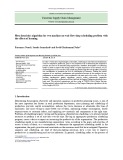
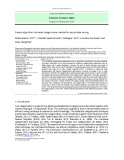
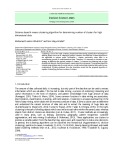

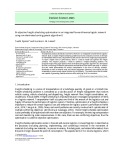
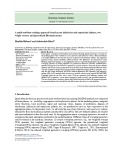
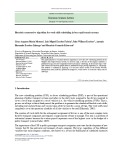


![Bài tập tối ưu trong gia công cắt gọt [kèm lời giải chi tiết]](https://cdn.tailieu.vn/images/document/thumbnail/2025/20251129/dinhd8055/135x160/26351764558606.jpg)




